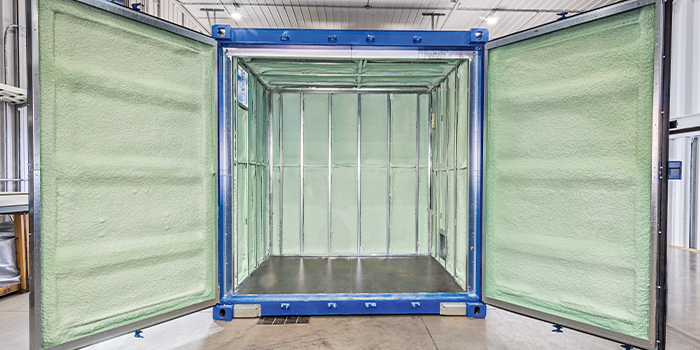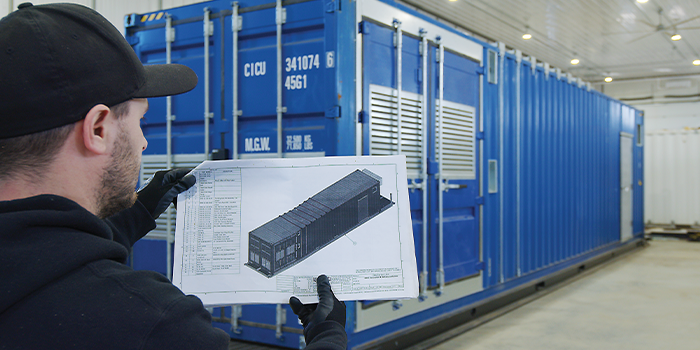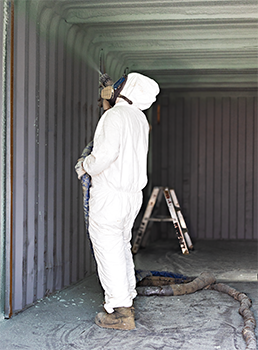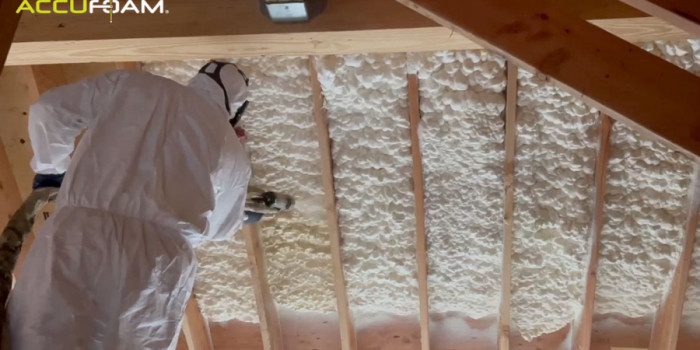From Cargo to Comfort


SPRAY FOAM MAGAZINE – Stepping on to the world stage in the 1950’s, shipping containers were predominately used to help transport goods across the oceans and continents. However, today these containers are evolving into something so much more than just a means to transport goods.
A locally owned and operated business in Saskatoon, Saskatchewan, Canada is taking these rigid shells and transforming them into sustainable and energy efficient containers with the help of installing two to three inches of spray foam. How is this possible with Canada’s strict building codes? What makes this company unique, and how can they help spray foam contractors across the globe? With so many questions, Spray Foam Magazine spoke with Channing McCorriston, CEO of The Container Guy to find out more.
Research
Channing has 14 years of experience modifying shipping containers and happens to be a Chartered Professional Accountant. However, his passion and mindset are clearly in technical design and a great understanding of metal fabrication, electrical, plumbing, and HVAC code requirements. This is immediately obvious when he starts explaining the workings of The Container Guy. He proudly shares, “The way we have studied containers is really at a PhD level. During the pandemic, the National Research Council gave us grounds to research and develop rapid response, modular structures. We had to analyze all the corrugations and switch our thinking from feet and inches to millimeters.” Channing and his design team have also calculated how many BTUs (British Thermal Units) are required to heat or cool a 20 or 40 foot container in a few different climate zones, with two vs. three inches of foam.

Channing showing off the engineering technologists’ drawings of a finished hybrid container.
Why Spray Foam?
The Container Guy, who employs several engineering technologists, architects, and programmers, mainly focuses on the commercial market, and has modified containers into offices, mining camps, HAZMAT units, and more. Hiring the skills of Luis Ardila, owner of Komfort Insulation Ltd., they typically spray two or three inches of foam applied to their container-based structures. “I’m a huge advocate of spray foam and how well it insulates, attaching straight to the corrugations of the container, unlike batt insulation where there are cavities due to the lack of flatness in the container walls. This makes it a nightmare for traditional insulation to follow the shape of the container without gapping. This can cause issues because it leaves a cold surface behind the insulation where condensation can easily form. Due to the lack of ventilation on the cold side, moisture gets trapped which is bad for the structure, contents, and any human in the space,” said Luis.
The Container Guy team prefers to use Huntsman Building Solutions Heatlok Soya HFO closed-cell foam.
On his popular YouTube Channel @TheContainerGuyTV, Channing is not afraid to educate people on their methods by telling them what he has learned about the insulation process in container building. “My competitors’ think I’m crazy to give away my trade secrets, but I don’t care. I have grown through my mistakes so I’m helping other people save time,” says Channing.

Container Modification World’s Modular Strut System being spray foamed.
Planning Containers
Channing also has his own business called Container Modification World, where their products are sold not only in Canada but also exported to the United States, Europe, and Australia. They have a modification planning system named, “PlanMyCan.com” which is public and free, used by their customers (and competitors) worldwide. The best way to describe this revolutionary container modification software is to think of a well-known global home furnishing brand that lets its customers choose the products and then design the overall setup to their requirements. However, instead of kitchens, think of everything needed to modify a container from vents, shelving, and locks, to weldless window and door kits, and framing & flashing kits.
Channing has designed steel stud brackets (SSB), corner casting covers, and container door flashing kits that work together to eliminate all the thinking by defining the ceiling, wall, and end wall planes when steel studding shipping containers. Spray foam is the structural glue that sticks everything together with the bonus of that perfect vapor barrier. “We now have the SSB’s injection molded out of composite. So, where they used to be aluminum and a little bit of cold transfer, now there’s zero thermal bridging. Basically, the entire container becomes like a YETI cooler. The perfect foam envelope,” explains Channing.
Helping Spray Foam Contractors
Any spray foam contractor who has ever foamed a container will know the difficulties they face when it comes to foaming the doors. Some may spray foam over everything, and then take an Olfa knife and cut it at the end. Then, they try and close the doors and if the container is not level anymore, they fail to close. If they can close it, the sound is terrible. Therefore, Channing and his team have invented a door flashing kit the contractor installs ahead of spraying, and it retains the foam and insulates like a standard garage door which you can view here: https://youtu.be/nq1Lqs23v3Q. There is also another wall flashing kit that accompanies this one, and fits around the door frame.
To get all the components to fit and work together took many years of research and development. “Everything now works together perfectly. Just like pushing a shopping cart around a grocery store, we chose the components we need for that container, and we know it will all work,” clarifies Channing.
The Container Guy takes their designs very seriously, always keeping in mind that in Canada, they must have structural engineering drawings to achieve building code. Their designs can be used, and their components purchased so that anyone wanting to build the perfectly sealed container, can follow their design instructions, after which they can modify their container how they want. “Once people begin working or living inside these things, they are no longer just a storage container. It is therefore imperative they are structurally sound and well insulated. The air needs to be healthy and the environment right,” emphasizes Channing.

The Container Guy is an innovator within their industry. By constantly developing new accessories and quick and easy ways to modify without compromising the integrity of the structure, spray foam contractors are starting to take notice of the components and techniques they have to offer. With the expertise of architects and engineering technologists, along with Channing’s imagination and design talent, they are pushing boundaries to produce sustainable and energy efficient containers for storage, functional living, and working environments.
For use by SprayFoamMagazine.com & Spray Foam Magazine
Disqus website name not provided.










































